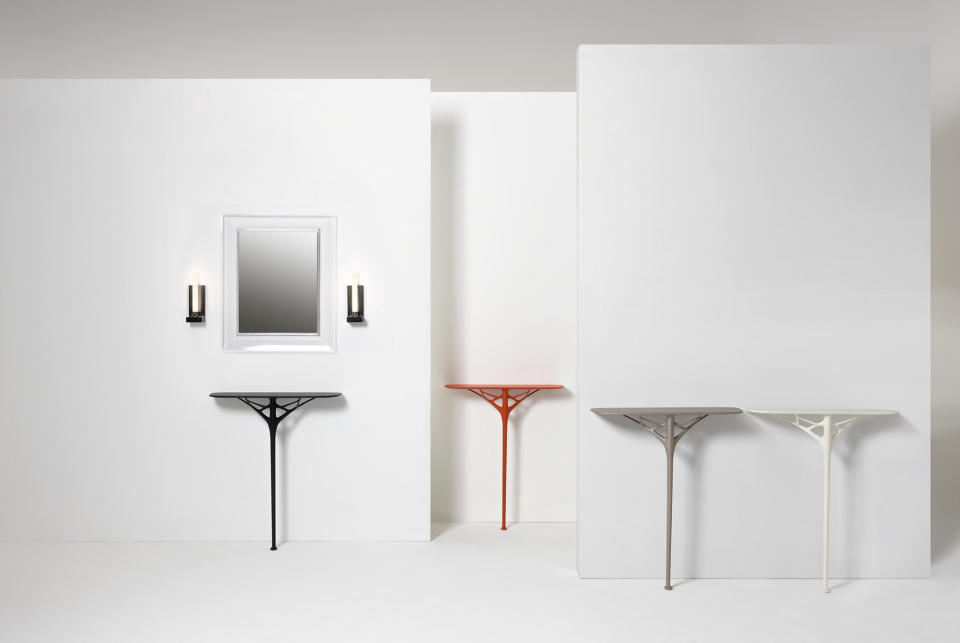How Kartell Democratized High-end Design, Starting with a Plastic Chair
- Oops!Something went wrong.Please try again later.

At the turn of the Millennium, famed French industrial architect and designer Philippe Starck imagined something for Kartell that simply had never been done before: The crystal clear La Marie armchair made of patented transparent polycarbonate.
Swiftly molded in one single piece, the Italian design company rapidly won the hearts of minimal urban sophisticates on a quest to create space in small apartments. Its success led to its grander counterpart, the Louis Ghost Armchair, three years later. With a hint of Baroque, the armchair could either be positioned in Versailles or infuse subtle decadence into a humbler home. For Starck, it’s a “democratic design 2.0.”
More from WWD
“Louis Ghost armchair designed itself, crafted by our occidental collective subconscious; both visible and invisible, real and immaterial, elegant and intelligent,” Starck says. The Louis Ghost, priced at $545 each, is made with polycarbonate 2.0, based on a second generation renewable polymer made from cellulose and paper waste.
Indeed, democratizing high-end design by world-renowned, design-forward creatives is what Claudio Luti, a former Versace manager, has achieved since he took the company over from his in-laws in 1988. The Louis Ghost, with its indestructible, pristine nature, is also an emblem of the way forward for Kartell as Luti’s children, Federico and Lorenza, drive the future of the brand their grandparents started in 1949.
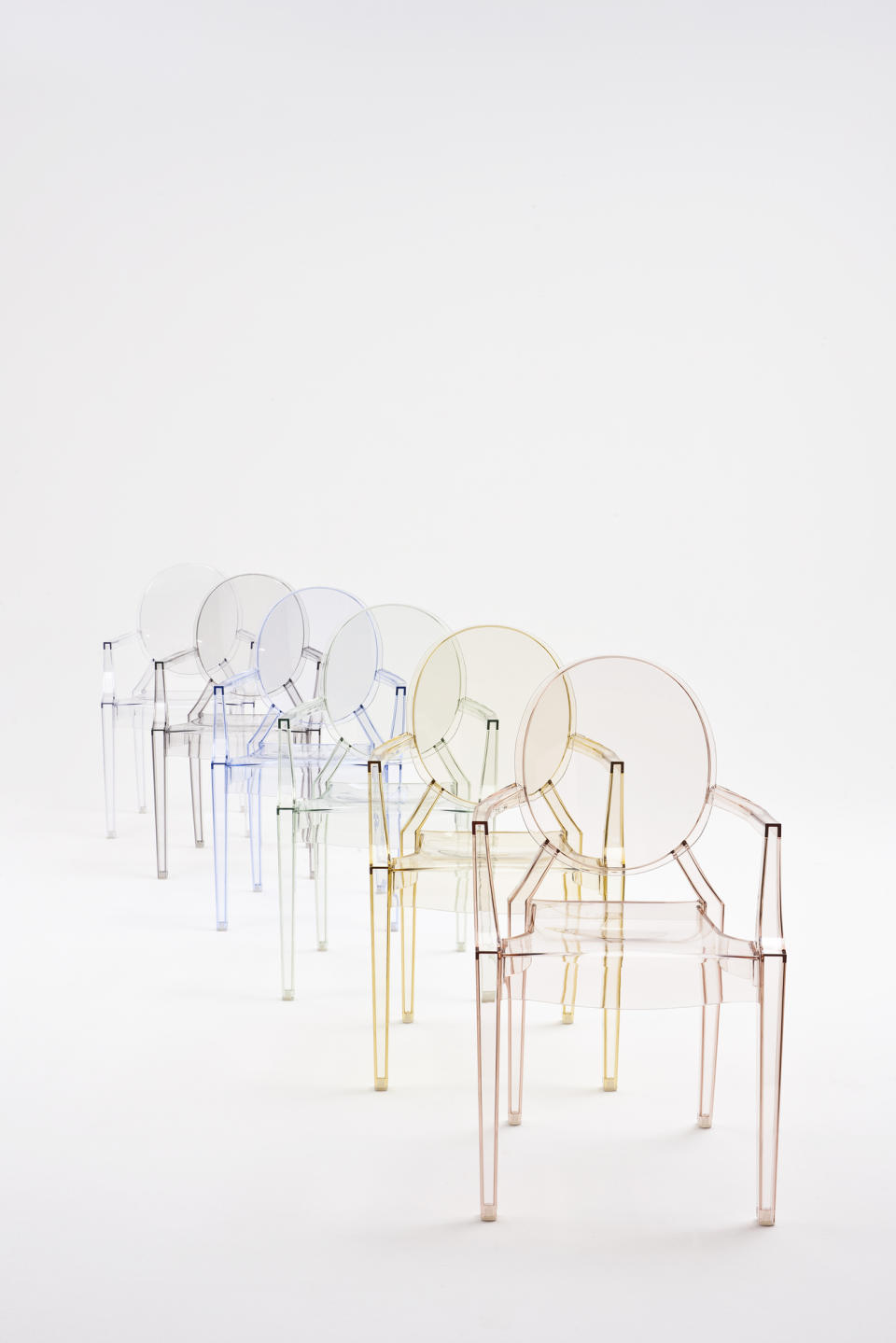
In fact, Lorenza, marketing and retail director, spends a lot of time de-vilifying plastic’s image as a waste material, especially for the U.S. market.
When Kartell launched its first range of eyewear in 2022, it used KartellBio, a green material or sustainable acetate derived from cotton and precious wood fibers. Its collaboration with Illycaffè is a continuing range of seats whose structure is made from the coffee company’s recycled Iperespresso capsules. The first ambassador of the project was the Re-Chair, which was designed by Italian architect Antonio Citterio. During Design Week, which will kick off April 15, Kartell will unfurl the third iteration of this collaboration with Illy. The Re-Chair was originally launched in 2022.
“We work a lot now on education and a lot on the sustainability materials. We perform many different experiments with regards to materials, so we just need to teach our consumers what it’s all about,” she says.
Starck echoes this, highlighting the difference between frivolous use of plastic and making products that last a lifetime. “The millions of tons of plastic bags used for five minutes [and that] eventually last for 200 years…of course that is unacceptable. On the other hand, a chair that is correctly designed to culturally last over time, and correctly manufactured using recycled or bio-sourced plastics that can be preserved, can last for four or five generations, is different,” he contends.
Lorenza’s father Claudio, dressed for work in a dapper suit and pocket square, looks out over the green courtyard of the Kartell headquarters and underscores that Kartell’s plastic creations are something that last a lifetime. In fact, what the family and its consortium of visionaries have achieved is creating something that challenges the excellence of hand craft, the elder Luti contends.
“And then the other step we have taken was towards sustainability. Has work really been done in that direction? We didn’t set limits for ourselves,” he says.
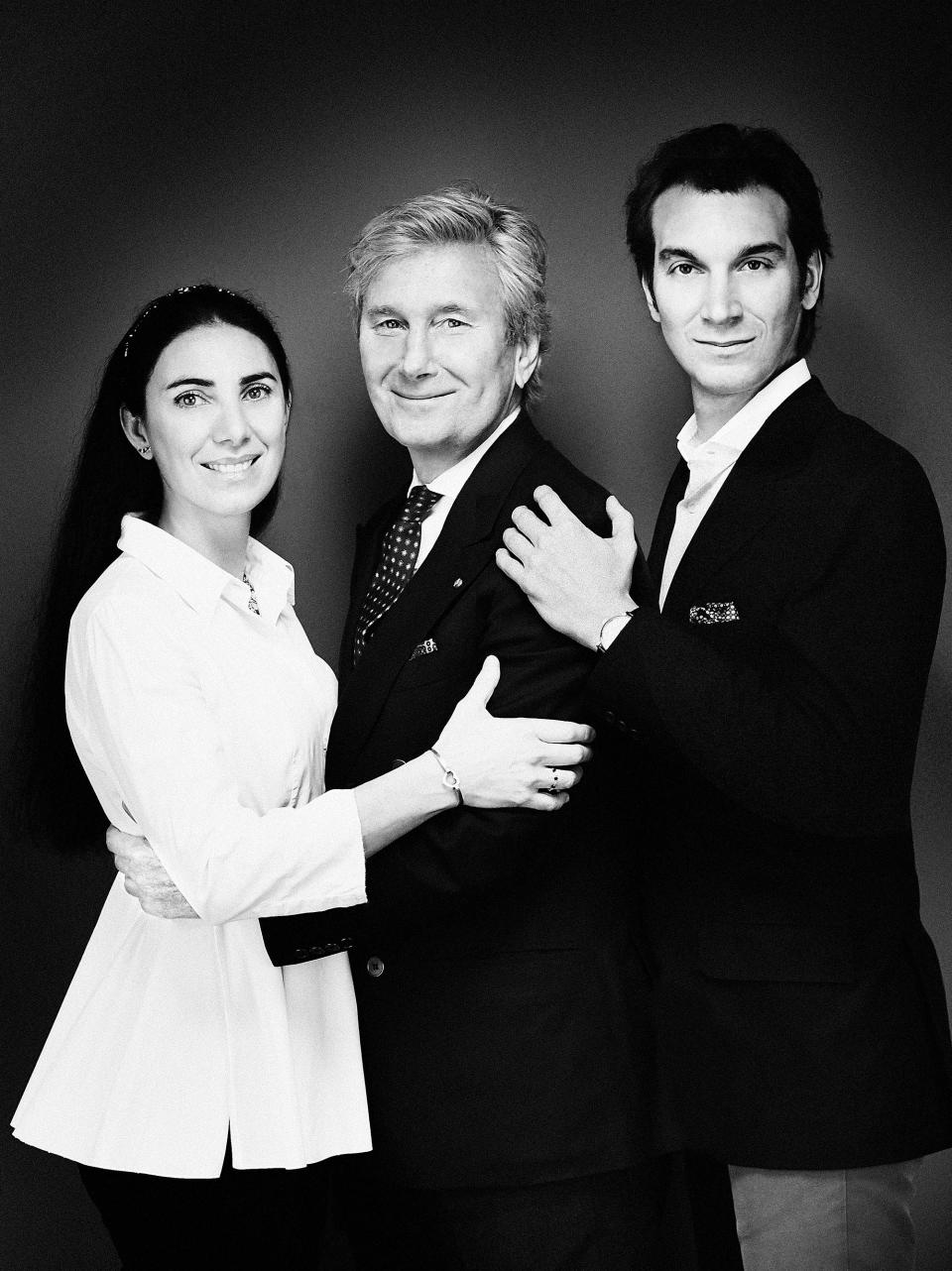
Starck admits being “fascinated” by Claudio Luti upon meeting him, adding that they spoke the same language. “He arrived like a saving angel, because he did not come from the furniture field but from the fashion world. He therefore proposed other methods, more sophisticated, than the old furniture system. Together we have a laboratory to create, research and experiment all the intelligent materials. That is why I love to work with Kartell, because it is a permanent exploration,” Starck adds.
With the pace of the fashion industry, Claudio Luti drove his vision, solidifying collaborations with designers like Starck, Citterio, Piero Lissoni, Vico Magistretti, Ferruccio Laviani, Patricia Urquiola and Ron Arad, who made the malleable, spiral Bookworm bookshelf in 1994. Luti’s research and development and insistence on creating products with a thickness of no more than six millimeters continuously pushes the barriers of plastic production and color palettes.
“There have been many experiments in all these years, so there have been many experiences. And so when I say take risks because you do something first and even until you see it you have to first invest the money and the time and then you see the result,” he stresses. “You have to be prepared to be strong to take risks,” he says, adding with the right technicians and innovators, of course.
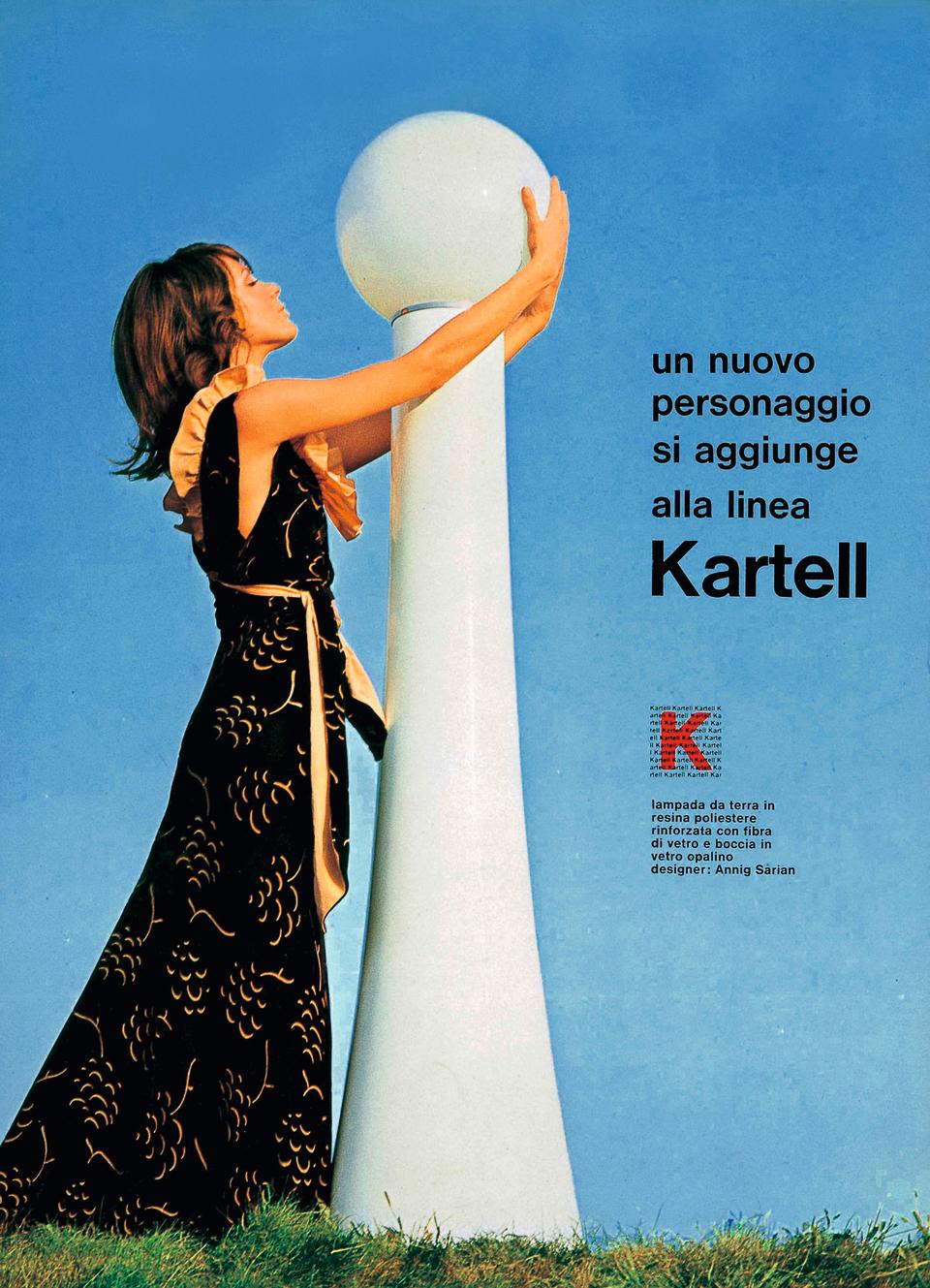
Perhaps the key to Kartell’s future lies in its distant past. What the company had — that America didn’t, for example — was the knowledge of Nobel Chemistry Prize laureate Giulio Natta, who developed his own durable polycarbonate. Luti’s father-in-law Giulio Castelli, a chemical engineer, was a student of Natta’s and put his teachings and his innovative possibilities to good use, making them available for the mainstream.
From the 1950s on, Kartell enchanted a generation of housewives as it began making buckets, carafes, freezer boxes and even potties, setting colorless Italian kitchens and bathrooms alight with its pop spirit. But Giulio’s wife, Anna Castelli Ferrieri, an architect and designer, a pupil of post-war architects Franco Albini and Ignazio Gardella, had bigger ideas. She envisaged solutions for the home and developed modular systems that became her hallmark: The stackable storage containers of chests and drawers designed in the ’60s have remained best sellers to this day.
The next generation
Lorenza, whose first job was working at Ermenegildo Zegna under Anna Zegna, says she takes the same drive to work her grandparents did every single day from Milan to Kartell’s headquarters in Noviglio. Growing up she realized her grandparents worked way more and had a more colorful house than her friends’ grandparents did, but didn’t really know why. Her face lights up when she reminisces about their vibrant parties, and how she was invited to help out in her youth at Salone del Mobile.Milano, passing out press kits and once introduced her family to a Brazilian retailer that would become one of their major partners. Working for Kartell was a natural choice.
“Nobody forced me. In a family business, forcing someone is a recipe for disaster,” she says.
Today she sits at the head of the museum, a position held by her grandfather many years ago, scouting new initiatives and collaborations.
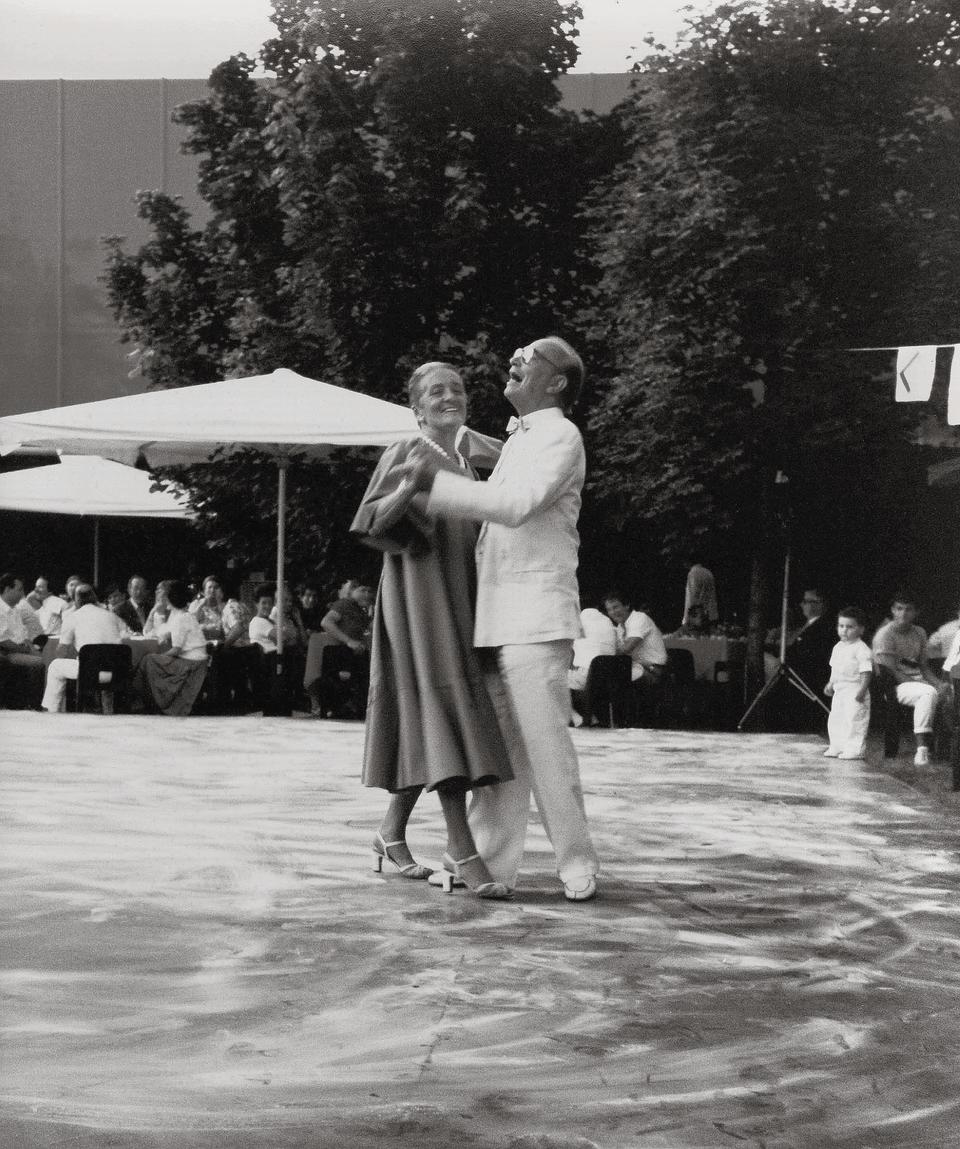
Looking ahead, the family is focused on enhancing its international retail footprint and driving its story further afield into new territories like India and the Philippines.
“So especially in America, it is absolutely fundamental….It has grown the most in terms of follower budget both on site and on social media. For us, it has been very, very important because I believe that for doing well in America and to conquer America is precisely the most important job to do. Expressing your lifestyle, expressing your storytelling,” Lorenza says.
Last year Kartell relocated its Manhattan flagship from SoHo to Madison Avenue in the middle of the city’s interior design scene as part of a larger initiative by the family to bolster the company’s international retail footprint and better tell its brand story to a wider audience.
Every year Kartell explores new technologies and new materials, setting increasingly ambitious goals not only at the industrial level but also in terms of compliance with sustainability protocols, she adds. At Design Week in Milan, Kartell will unfurl its Artificial Intelligence collection of AI-generated models made from recycled materials, like a recycled thermoplastic techno polymer with a mineral filler. The A.I. Lounge chair is suitable for both indoor and outdoor use, while the new A.I. Console is a sleek accent for hallways in both commercial and residential spaces. A black version is crafted from the Illy iperEspresso coffee capsules. Illycaffè said that with this collaboration, it rose to new heights.
“Together with Kartell, with whom we share the need for the transition to increasingly innovative and sustainable production processes, we were able to put into practice solutions that transformed our recycled capsules into design objects,” says illycaffè chief executive officer Cristina Scocchia.
Starck, who will also present his H.H.H. Her Highest Highness chair made from a green polycarbonate, says Kartell’s daring yet researched approach is what sets it apart from other brands.
“Their ecological awareness combined with their creative prowess redefine design every day.”
